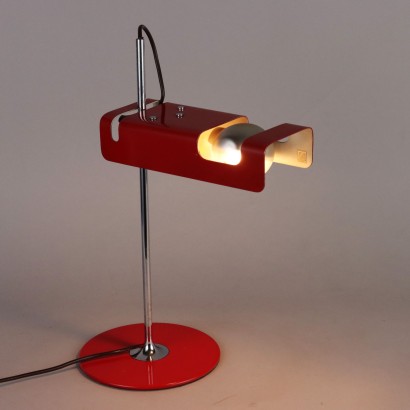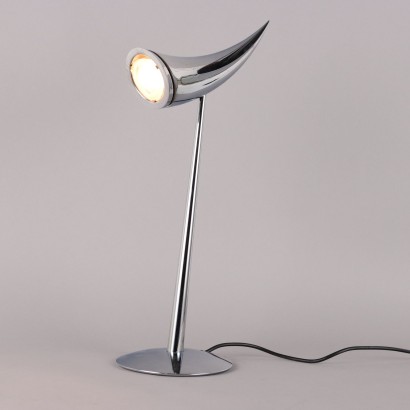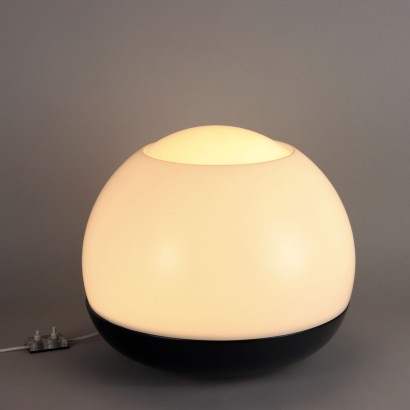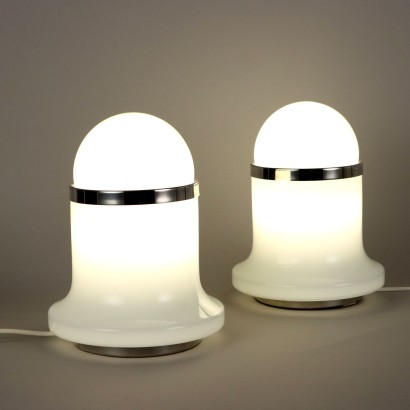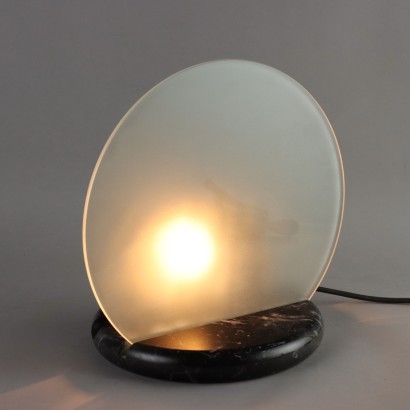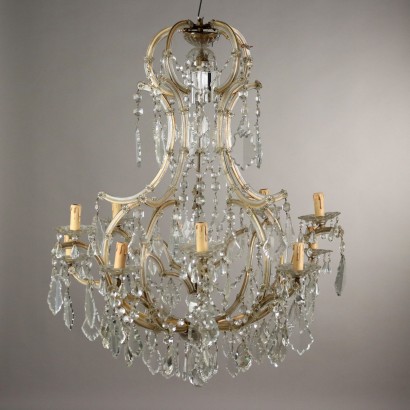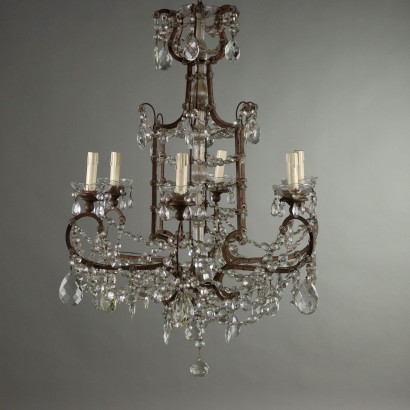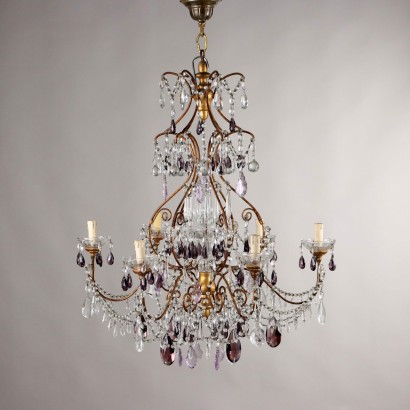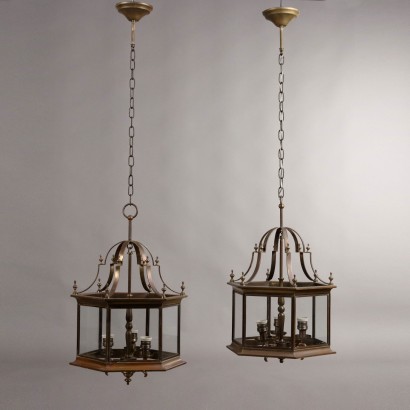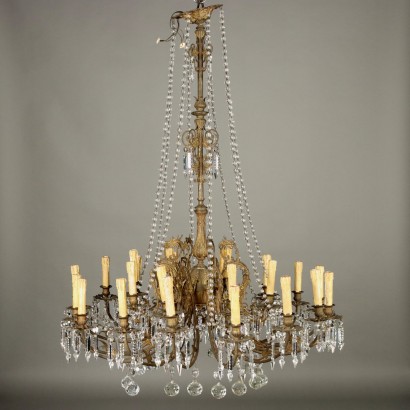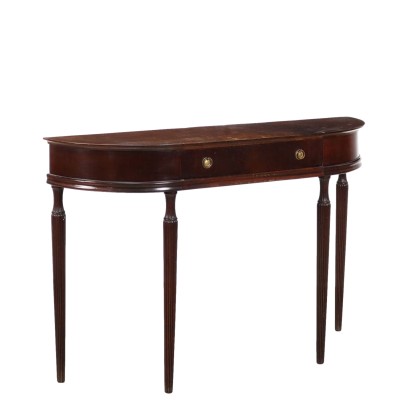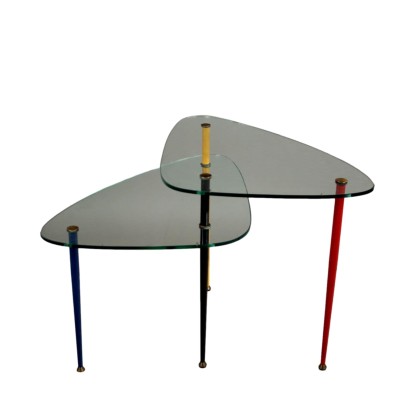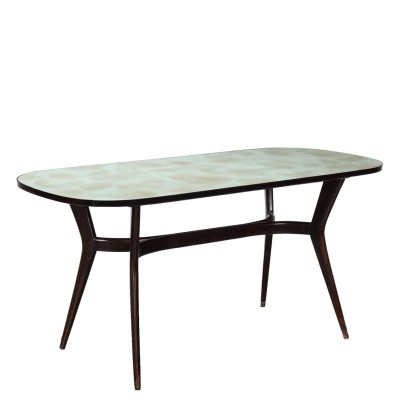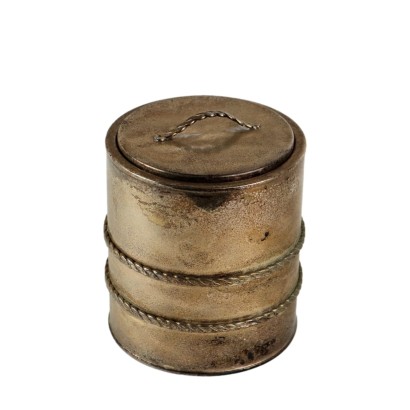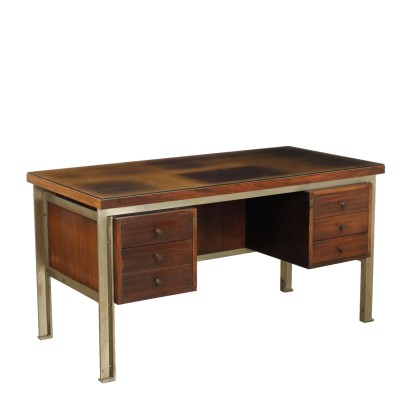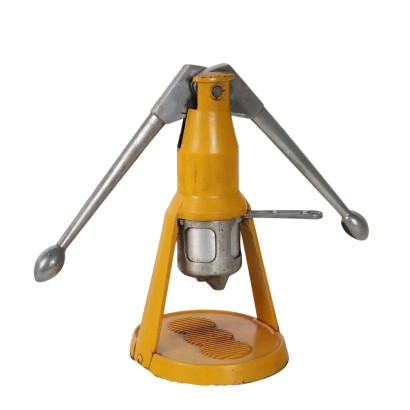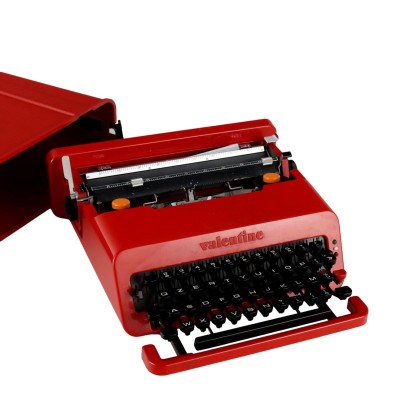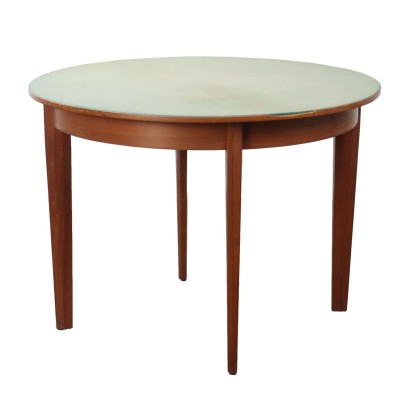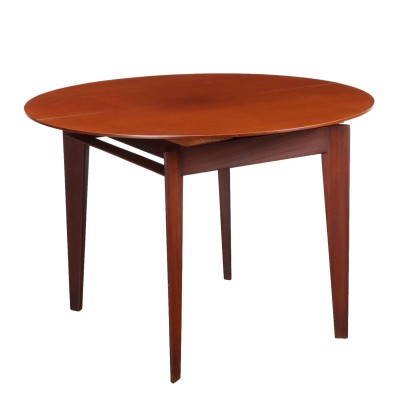Vintage 1960s Lamp O-Luce Spider Design Joe Colombo
Features
Designer: Joe Colombo
Production: O-Luce
Model: Spider
Time: 1960s
Production country: Milano, Lombardia, Italy
Material: Lacquered Aluminum , Metal , Lacquered Metal
Description
Table lamp designed by Joe Colombo which we present in the red version, with a circular base in lacquered metal, vertical metal stem and adjustable and height-adjustable diffuser in lacquered aluminium. Winner of the Compasso d'Oro in 1967. Very good condition.
Product Condition:
Product in very good condition; may show slight traces of wear; it may have undergone restoration work. We try to present the real state as fully as possible with photos. If some details are not clear from the photos, what is stated in the description applies.
Dimensions (cm):
Height: 39,5
Width: 10
Depth: 22,5
Diameter: 18
Additional Information
Designer: Joe Colombo
Joe Colombo was born in Milan in 1930. In the early 1950s he joined the nuclear painting group with Enrico Baj. He studies at the Brera Academy of Fine Arts and at the Milan Polytechnic. In 1961, having abandoned the profession of sculptor and painter, he opened a design studio in Milan. In 1964, at the XIII Triennale di Milano he obtained the Gold Medal. He participates in the XIV Triennale di Milano, where in a space entirely dedicated to him, he exhibits new interior design proposals, including the famous programmable system for living. In 1963 he won the Gold Medal at the Milan Triennale with the acrylic table lamp. In 1967 he won the Compasso d'Oro Award for the Spider lamp. In 1968 he obtained the Design International Award in Chicago. In 1970 he won the Compasso d'Oro Award for an air conditioner produced by CANDY. In 1971 the Boby won the first prize at the SMAU in Milan.Production: O-Luce
Founded in 1945 by Giuseppe Ostuni, master of art, Oluce is, in the lighting field, the oldest Italian design company still active. Before the world war, in fact, there was only Arteluce by Gino Sarfatti, which disappeared at the end of the 90s, Azucena and Lamperti were born in 1948, and Arredoluce and Stilnovo in 1950. However, it was above all Arteluce, Azucena and Oluce that focused, for many years, on the Italian panorama, establishing themselves as meeting centers for those designers who, strongly involved first with the reconstruction and then with the birth of mass production, animated the Milanese debate: Vittoriano Viganò and the BBPR, Gigi Caccia Dominioni and Ignazio Gardella, Marco Zanuso and finally Joe Colombo. Already in 1951 Oluce successfully participated in the IX Triennale. A great success was confirmed by Tito Agnoli with the mention of two lamps (the floor model 363 and a special model for bookcases) in the second edition of the Compasso d'Oro, in 1955. In 1956, two other reports followed in rapid sequence: for a very notable table lamp in polyvinyl with slats and for a pendant luminaire (mod. 4461) with double Perspex diffuser. Finally, it is essential to remember, in 1954, the 255/387 luminaire (called ''Agnoli''), a slender rod holding a spot, marking the end of lampshades and the adoption of very simplified floor lamps also in domestic lighting . Meanwhile, in 1963, in production since 1965, Marco Zanuso designed a forgotten masterpiece for Oluce, the model 275 table lamp with a large white Perspex diffuser that can be rotated on a lacquered metal base. In 1964/66, again from a material, the printed glass called ''Fresnel Lens'', with Joe Colombo, the family of ''Fresnel'' waterproof outdoor lamps with painted metal base and diffuser held by clips was born. 'steel. In 1967, however, Colombo was already further ahead and, with the ''Coupé'' model, preserved at the MoMA in New York, proposed a curved stem of considerable size to support a very elegant semi-cylindrical cap. In 1968, the Coupé won the ''International Design Award'' from the American Institute of Interior Designers in Chicago. Finally, in 1970, which went into production in 1972, one year after the premature death of Joe Colombo, the ''Halogen lamp'' was born, necessarily called ''Colombo'' ever since. In 2001, white Murano glass stones and cane rods transparent perspex populate the Oluce stand at Euroluce. Designed by Laudani&Romanelli and Ferdi Giardini, they propose a way of understanding design that goes beyond function to become poetry. Finally, Oki Sato, or Nendo, the most refined of the new Japanese designers, joins the Oluce team, first with ''Sorane'' and then with ''Switch''. But this is no longer the story of Oluce, but rather Oluce's contribution to contemporary design. -Time: 1960s
1960sMaterial:
Lacquered Aluminum
Metal
Lacquered Metal
Other customers have searched:
Lampadari modernariato, lampadario modernariato, lampada a soffitto design, lampadari design, lampada a soffitto..
Approfondimenti
Se vuoi conoscere qualcosa in più sul mondo dei lampadari di modernariato, consulta gli approfondimenti del nostro blog e le presentazioni di FineArt:
Che cos'è il vetro opalino
Il lampadario Maria Teresa, un grande classico dell'illuminazione
Due epoche per un lampadario dal gustounico
Lampadari Neoclassici Eleganti per Ricevimenti
Le Icone del design:
Lampada Parentesi: libertà su cavo
Pistillino: la natura che incontra il design
Esempi di abbinamento di lampadari di modernariato con altri arredi, su Corner MiX:
Corner MiX n.1
Corner MiX n.4
Corner MiX n.3
Corner MiX n.6
Corner MiX n.8
Corner MiX n.11
Corner MiX n.12
Corner MiX n.15
Corner MiX n.5
Corner MiX n.7
Corner MiX n.10
Corner MiX n.13
Corner MiX n.2
Corner MiX n.9
Corner MiX n.16
Corner MiX n.14
FineArt:
Tutta l'illuminazione by FineArt
Lampada '2259/2', Max Ingrand per FontanaArte
Lampadario barocco inizi XVIII secolo
Lampadario – O. Lelièvre & Susse Frères, Parigi, ultimo quarto XIX secolo
Lampadario Regency, Inghilterra, 1820 ca.
Lampadario anni '40 Manifattura Italiana
Lampadario Impero a Mongolfiera, primo quarto XIX secolo
Lampadario Inglese, prima metà XIX secolo
Lampadario 'Giogali', Angelo Mangiarotti per Vistosi
Biedermeier Reifenluster, Vienna, 1820-1830 ca.
Lampada da terra 'Prisma LTE12', Ignazio Gardella per Azucena
Lampada 'Pugnali' Piero Fornasetti
Lampada Magnolia di Sergio Mazza e Giuliana Gramigna per Quattrifolio
Sul modernariato in generale
From the Sixties to the Sixteenth Century – From the Sixteenth Century to the Sixties
Sedute design
Le sedute e la nascita del design
Sacco - la poltrona trasformista
Valigia - la lampada da viaggio
Pistillino - la natura che incontra il design
Eames lounge chair
Tizio by Artemide - l'equilibrio del movimento
Come dare un look mid century alla propria casa
Design scandinavo vs Design Italiano
Alla scoperta del modernariato
Approfondimenti
Se vuoi conoscere qualcosa in più sul mondo dei lampadari di modernariato, consulta gli approfondimenti del nostro blog e le presentazioni di FineArt:Che cos'è il vetro opalino
Il lampadario Maria Teresa, un grande classico dell'illuminazione
Due epoche per un lampadario dal gustounico
Lampadari Neoclassici Eleganti per Ricevimenti
Le Icone del design:
Lampada Parentesi: libertà su cavo
Pistillino: la natura che incontra il design
Esempi di abbinamento di lampadari di modernariato con altri arredi, su Corner MiX:
Corner MiX n.1
Corner MiX n.4
Corner MiX n.3
Corner MiX n.6
Corner MiX n.8
Corner MiX n.11
Corner MiX n.12
Corner MiX n.15
Corner MiX n.5
Corner MiX n.7
Corner MiX n.10
Corner MiX n.13
Corner MiX n.2
Corner MiX n.9
Corner MiX n.16
Corner MiX n.14
FineArt:
Tutta l'illuminazione by FineArt
Lampada '2259/2', Max Ingrand per FontanaArte
Lampadario barocco inizi XVIII secolo
Lampadario – O. Lelièvre & Susse Frères, Parigi, ultimo quarto XIX secolo
Lampadario Regency, Inghilterra, 1820 ca.
Lampadario anni '40 Manifattura Italiana
Lampadario Impero a Mongolfiera, primo quarto XIX secolo
Lampadario Inglese, prima metà XIX secolo
Lampadario 'Giogali', Angelo Mangiarotti per Vistosi
Biedermeier Reifenluster, Vienna, 1820-1830 ca.
Lampada da terra 'Prisma LTE12', Ignazio Gardella per Azucena
Lampada 'Pugnali' Piero Fornasetti
Lampada Magnolia di Sergio Mazza e Giuliana Gramigna per Quattrifolio
Sul modernariato in generale
From the Sixties to the Sixteenth Century – From the Sixteenth Century to the Sixties
Sedute design
Le sedute e la nascita del design
Sacco - la poltrona trasformista
Valigia - la lampada da viaggio
Pistillino - la natura che incontra il design
Eames lounge chair
Tizio by Artemide - l'equilibrio del movimento
Come dare un look mid century alla propria casa
Design scandinavo vs Design Italiano
Alla scoperta del modernariato
Product availability
The product can be seen at Cambiago
Immediate availability
Ready for delivery within 2 working days from ordering the product.



